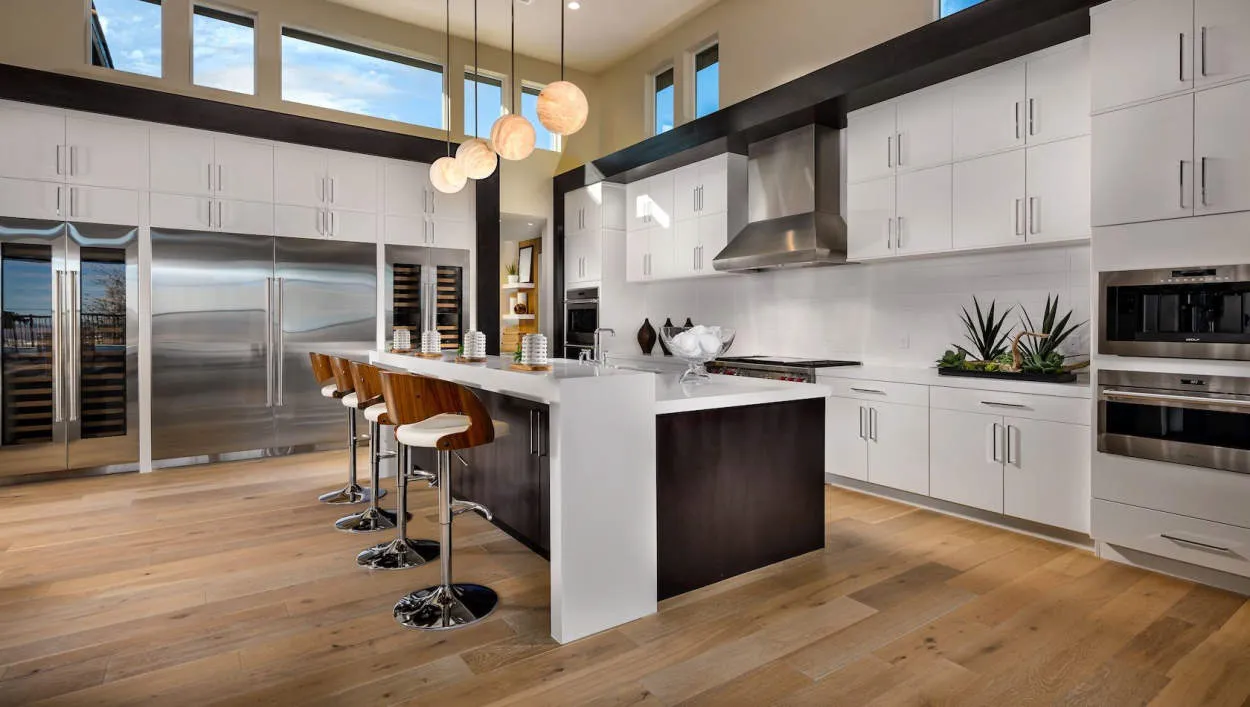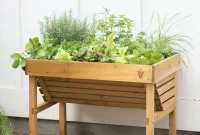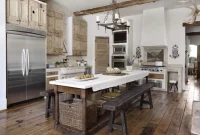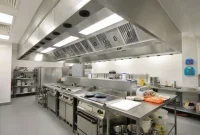The Versatile Kitchen: Multi-Use Spaces for Modern Homes. Discover how modern kitchens are transforming into versatile spaces, serving various functions such as cooking, dining, working, and entertaining. With innovative design solutions and smart storage solutions, these multi-use kitchen areas are catering to the needs of the modern homeowner.
Designing a Multi-Functional Kitchen
A well-designed kitchen not only serves as a space for cooking and food preparation, but also as a versatile area for various activities. In modern homes, the kitchen has become a multi-use space that accommodates different functions and adapts to the needs of homeowners.
One key aspect of designing a multi-functional kitchen is the layout. An open concept layout allows for seamless flow between the kitchen and adjacent areas, such as the dining or living room. This layout promotes social interactions and makes the kitchen a central hub for gathering and entertainment.
Another important design element is storage. Incorporating ample storage solutions, such as cabinets, shelves, and pantry systems, ensures that the kitchen can accommodate not only cooking essentials but also household items, making it a multifunctional storage area. This allows homeowners to keep their kitchen tidy and organized while maximizing its functionality.
Furthermore, modern kitchens often include an island or a breakfast bar. These additions provide extra counter space for meal preparation and can serve as a casual dining area or a workspace for various activities, such as working from home or assisting children with homework.
Incorporating technology into the kitchen also enhances its functionality. Smart appliances, such as refrigerators with touch screens or ovens with built-in Wi-Fi, enable homeowners to control and monitor their kitchen appliances remotely. This technology not only makes tasks more convenient but also adds a modern and futuristic touch to the kitchen space.
A multi-functional kitchen should also prioritize lighting. Properly placed and adjustable lighting sources, such as pendant lights or under-cabinet lighting, create ambience and ensure a well-lit space for cooking, dining, and other activities. Additionally, incorporating large windows or skylights can bring in natural light, making the kitchen feel brighter and more welcoming.
Lastly, flexible furniture and accessories are crucial for a multi-functional kitchen. Investing in movable kitchen islands, foldable tables, and stackable chairs allows homeowners to easily adapt the space according to their current needs. This flexibility enables the kitchen to transform from an intimate cooking area to an entertainment spot for guests.
In conclusion, designing a multi-functional kitchen involves careful consideration of layout, storage solutions, technology integration, lighting, and flexible furniture. Implementing these elements in the kitchen creates a space that is not only efficient for cooking but also adaptable to various activities, making it truly versatile for modern homes.
[Space-Saving Solutions]
Kitchens in modern homes have become more than just a place for cooking. They have evolved to serve multiple functions, requiring innovative space-saving solutions. Here are some versatile ideas for creating multi-use spaces in your kitchen:
1. Kitchen Island with Storage
A kitchen island can serve as a focal point and provide added storage. Incorporate cabinets and drawers into the island design to maximize space utilization and keep your kitchen clutter-free.
2. Foldable Dining Table
If you have limited dining space, consider a foldable dining table. This versatile furniture piece can be easily extended or folded when needed, saving space and allowing you to utilize the area for other purposes.
3. Wall-Mounted Shelves
Utilize vertical space by installing wall-mounted shelves. These shelves can hold cookbooks, utensils, and other kitchen essentials, freeing up countertops and keeping everything within reach.
4. Hanging Pot Racks
Optimize storage and add a decorative touch by installing hanging pot racks. These racks keep your pots and pans within easy reach while freeing up cabinet space for other kitchen items.
5. Sliding Cabinet Organizers
Make the most of your cabinet space by installing sliding organizers. These pull-out shelves allow you to easily access items stored at the back, ensuring nothing gets lost or forgotten.
6. Over-the-Sink Cutting Board
Save valuable counter space by using an over-the-sink cutting board. This clever accessory fits securely over your sink, providing a convenient area for food preparation.
7. Magnetic Knife Strips
Keep your knives easily accessible and organized by installing magnetic knife strips. These strips can be mounted on walls or inside cabinet doors, freeing up countertop space.
By implementing these space-saving solutions, you can create a versatile kitchen that caters to your needs. Say goodbye to clutter and hello to a functional, multi-use space!
Creating a Social Cooking Space
As modern homes continue to evolve, so too does the concept of the kitchen. No longer just a space for preparing meals, the kitchen has become a versatile hub for socializing, entertaining, and creating lasting memories. A trend that has gained popularity in recent years is the creation of a social cooking space within the kitchen.
A social cooking space encourages interaction and engagement among family members and guests while meals are being prepared. It incorporates various design elements and features that foster a welcoming and inclusive atmosphere. Here are a few key aspects to consider when creating a social cooking space:
Open Layout
An open layout is essential for a social cooking space, as it allows for seamless communication and flow between the kitchen and adjacent areas. By removing physical barriers, such as walls or partitions, the kitchen becomes an extension of the living and dining areas, promoting interaction and connection.
Functional Island
A functional island serves as the focal point of a social cooking space. It provides additional workspace, storage, and seating options. The island becomes a gathering spot where family and friends can assist or simply chat with the cook. Including a built-in cooktop or sink in the island allows for interaction while preparing meals.
Ample Seating
Incorporating ample seating options in the social cooking space is crucial for creating a welcoming environment. This can be achieved through a combination of bar stools, built-in benches, or a dining table adjacent to the kitchen. Adequate seating ensures that everyone feels comfortable and can participate in the cooking process.
Entertainment Features
To enhance the social aspect of the cooking space, consider including entertainment features. This can range from installing a TV or a sound system to creating a designated area for board games or a mini bar. These features add a fun and relaxed atmosphere, encouraging people to gather and enjoy each other’s company.
Creating a social cooking space within the kitchen is a wonderful way to bring people together. It allows for shared experiences, promotes conversation, and makes the act of cooking more enjoyable. By incorporating an open layout, a functional island, ample seating, and entertainment features, you can transform your kitchen into a versatile and sociable space that is perfect for modern homes.
Integrated Dining Areas
In modern homes, the concept of integrated dining areas has gained popularity. These versatile spaces offer a seamless transition between cooking and dining, creating a more efficient and enjoyable experience for homeowners.
Integrated dining areas often feature an open floor plan, where the kitchen, dining room, and living room blend together. This design allows for easy interaction and communication among family members and guests, making it ideal for entertaining.
One popular trend in integrated dining areas is the use of kitchen islands with built-in dining tables. These multi-functional pieces provide both food preparation space and a casual dining spot. They are perfect for quick breakfasts or informal meals, eliminating the need for a separate dining room.
Another option for integrated dining areas is a dining nook or banquette. These cozy seating arrangements are often placed near the kitchen, creating a dedicated space for meals without the need for a formal dining room. Dining nooks can be customized to fit any space and offer a more relaxed and intimate dining experience.
Integrating dining areas into the kitchen not only saves space but also promotes a sense of togetherness. It allows the chef to be part of the conversation while preparing meals, making cooking a social activity rather than a solitary task.
Overall, integrated dining areas are a practical and stylish solution for modern homes. They combine functionality with aesthetics, creating a seamless and versatile space that accommodates the needs of a busy lifestyle. Whether it’s a kitchen island with a dining table or a cozy dining nook, these integrated spaces enhance the overall functionality and appeal of a home.
Versatile Kitchen Furniture
When it comes to modern homes, the kitchen is no longer just a space for cooking and preparing meals. It has become a multi-functional area where families gather, entertain guests, and even work. To maximize the functionality of the kitchen, versatile furniture is essential.
One popular option is the kitchen island. Not only does it provide extra counter space for meal preparation, but it can also serve as a casual dining area or a place for kids to do their homework. Some kitchen islands even come with built-in storage, allowing you to keep your cookware and utensils organized.
In addition to the kitchen island, modular cabinets are another great choice. These cabinets can be customized to fit any kitchen layout and can be easily rearranged to adapt to your changing needs. They offer ample storage for groceries, appliances, and even a hidden workspace for your laptop.
Another versatile piece of furniture is the extendable dining table. It can be compact for everyday use but can be expanded to accommodate larger gatherings. This eliminates the need for a separate dining room, saving space in smaller homes.
Lastly, investing in multifunctional seating options can greatly enhance the versatility of your kitchen. Bar stools with adjustable heights can be used at the kitchen island or as additional seating when entertaining guests. Benches with built-in storage can provide extra seating while keeping your kitchen clutter-free.
In conclusion, the kitchen has evolved into a multi-use space in modern homes. By incorporating versatile furniture such as kitchen islands, modular cabinets, extendable dining tables, and multifunctional seating, you can create a kitchen that meets your diverse needs without compromising style and functionality.
Conclusion
In modern homes, the versatile kitchen has become a valuable space that serves multiple purposes. From cooking and dining to socializing and working, this multi-use area allows homeowners to maximize their living spaces. With the right design and layout, the kitchen can seamlessly transition from a functional space to an entertaining hub. The versatility of the kitchen is a reflection of the changing needs and lifestyles of homeowners today, making it an essential component of any modern home.




